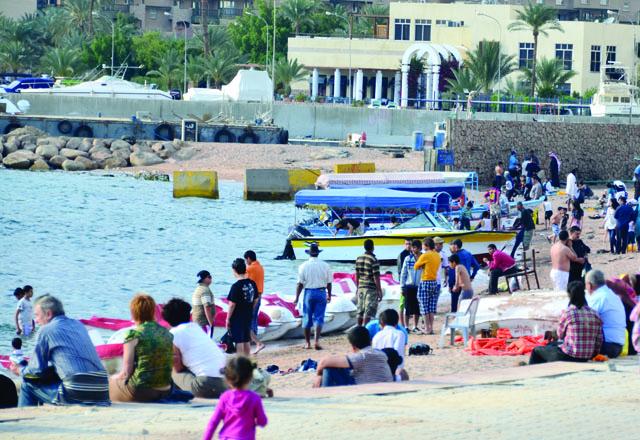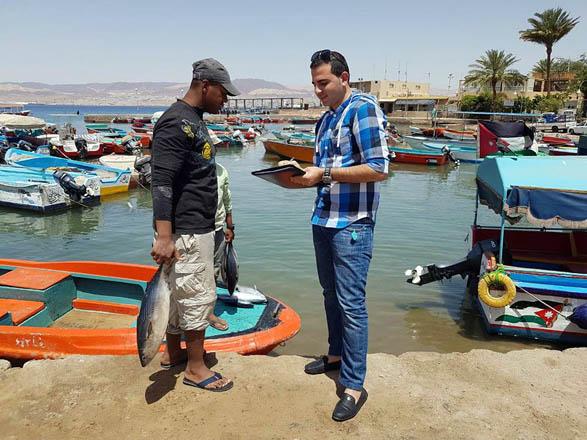You are here
65% of garbage collected from Gulf of Aqaba made of plastic — study
By Muath Freij - Jan 21,2015 - Last updated at Jan 21,2015

AMMAN — Plastic items constituted 65 per cent of the garbage collected from the Gulf of Aqaba last year, according to the results of a study conducted by the Royal Marine Conservation Society of Jordan (JREDS) and released on Wednesday.
JREDS Programme Manager Ihab Eid, who has been diving in the Gulf of Aqaba since 2002, said 11 clean-up dives were conducted in 2014.
Divers collected seven tonnes of garbage in three main campaigns alone, of which around three tonnes were plastic garbage, he said at a press conference held at the “Plastic Garbage — out to Sea?” exhibition in Amman.
JREDS Executive Director Faisal Abu Sondos, who is also an environmental expert, stressed the importance of maintaining the cleanliness of coral reefs, as it can help boost tourism in the Kingdom.
“It can be a tourist attraction as important as Petra or Jerash,” he told reporters. Abu Sondos noted that many countries depend on marine tourism, and Jordan can do the same if it keeps Aqaba’s coral reefs — which extend for 13 kilometres — clean.
Eid said the study covered the northern and southern public beaches in Aqaba.
“We wanted to know the total quantity of garbage on the seabed and the percentage of plastic items,” he added.
The study indicated that divers mostly found plastic shoes in the southern seabed, followed by plastic cups and plates.
The majority of waste collected from the northern seabed included utensils such as knives and plastic plates.
Meanwhile, JREDS and the Drosos Foundation also revealed the outcome of the “Plastic Garbage — out to Sea?” exhibition during its closing ceremony on Wednesday.
Organised by JREDS and the Drosos Foundation in cooperation with the Museum für Gestaltung in Zurich, the exhibition aimed to raise awareness about the danger posed by plastic garbage to the Gulf of Aqaba.
The exhibition, the first of its kind in Jordan, showcased plastic items collected from the seabed.
Eid said 3,000 people visited the three-month exhibition, 60 per cent of whom were students.
Thirty-one per cent of the visitors were Jordanian, 2 per cent of them were from Arab countries and 7 per cent of were foreigners.
Related Articles
Ihab Eid, who has been diving in the Gulf of Aqaba since 2002, said coral reefs fascinate him and he always enjoys looking at them when he goes to the bottom of the sea.
One to two square kilometres of Aqaba’s public beaches are lost every year to investment projects, according to marine conservationists.
AMMAN — The Royal Marine Conservation Society of Jordan (JREDS) is carrying out a study on fish stock in the Gulf of Aqaba to evaluate and d



















